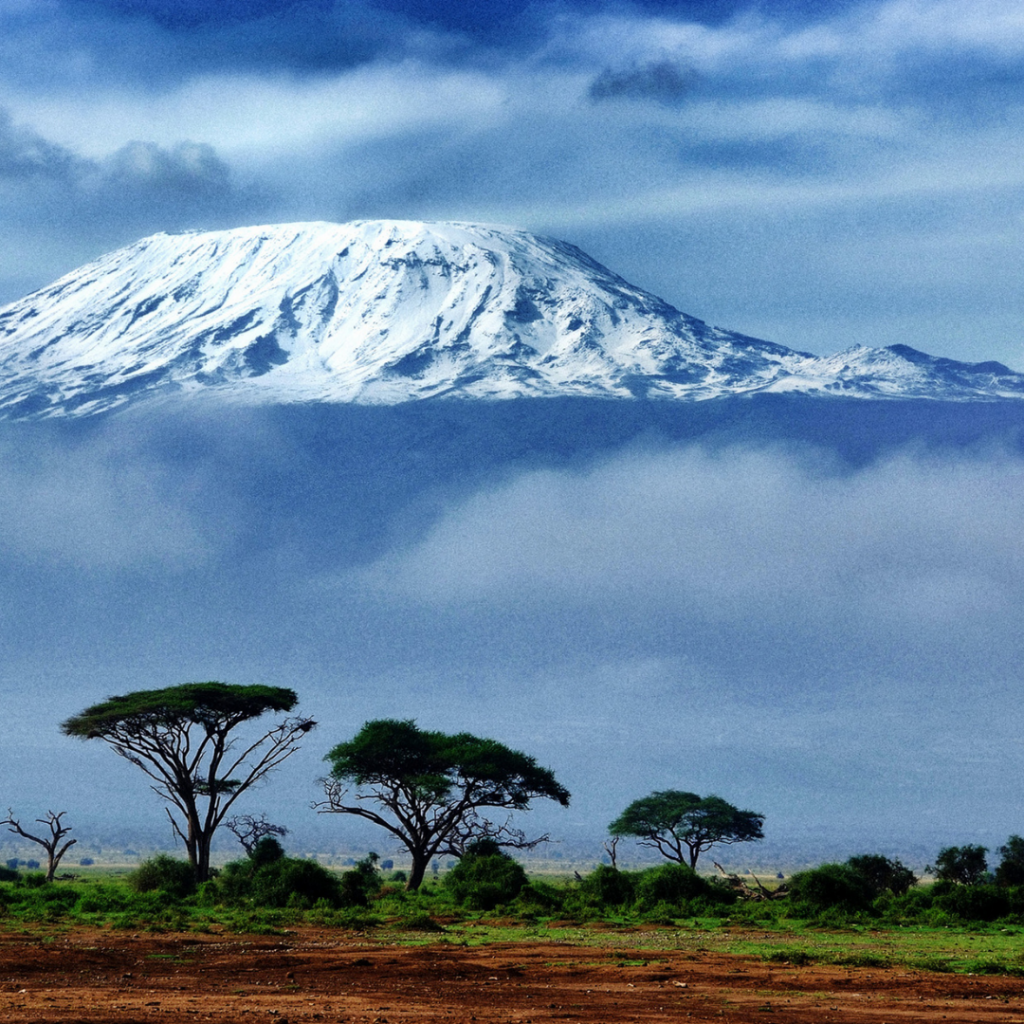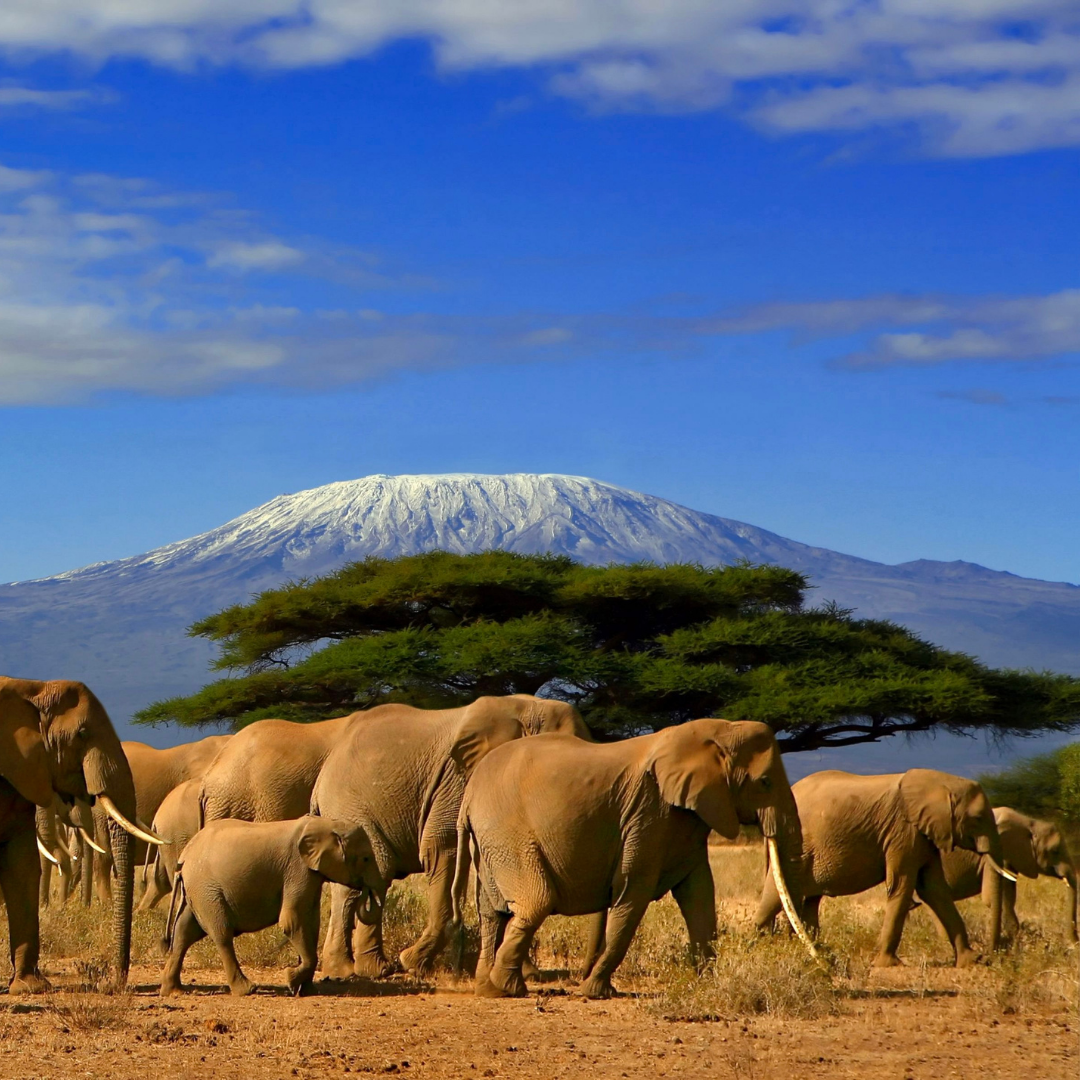Successfully climbing Kilimanjaro is considered the ultimate accomplishment for many hikers and athletes across the world. But, climbing Africa’s tallest mountain is no mean feat in fact, it has a 50% fail rate! So, it takes a lot of knowledge and a high level of fitness to climb Kilimanjaro!
In this blog post I detail the height of Mount Kilimanjaro, explain all the different climbing routes as well as providing detailed information for your ascent up Africa’s tallest mountain.
Is Mt Kilimanjaro the tallest mountain in the World?
The official height of Mount Kilimanjaro has in fact changed several times over the years, the most recent measurement states that Mount Kilimanjaro stands at 5893 meters (19,334 feet) and that is according to the United Nations Environment Programme/World Conservation Monitoring Center.
Mount Kilimanjaro is also known as the “roof of Africa”. It is located in North Eastern Tanzania, near the town of Moshi on the continent of Africa. It is the world’s tallest freestanding mountain. That is because it is not part of a mountain range like Mount Everest, which is part of the Himalaya mountain range.
Mount Kilimanjaro is not just a mountain but is in fact a stratovolcano ( a large volcano made of volcano, ash and rock). It has three cones – Kiba, Mawenzi and Shira.
This 5-night 6-day guided climb via the Marangu Route is one of the best guided tours available up Kilimanjaro!
How hard is it to climb Kilimanjaro?
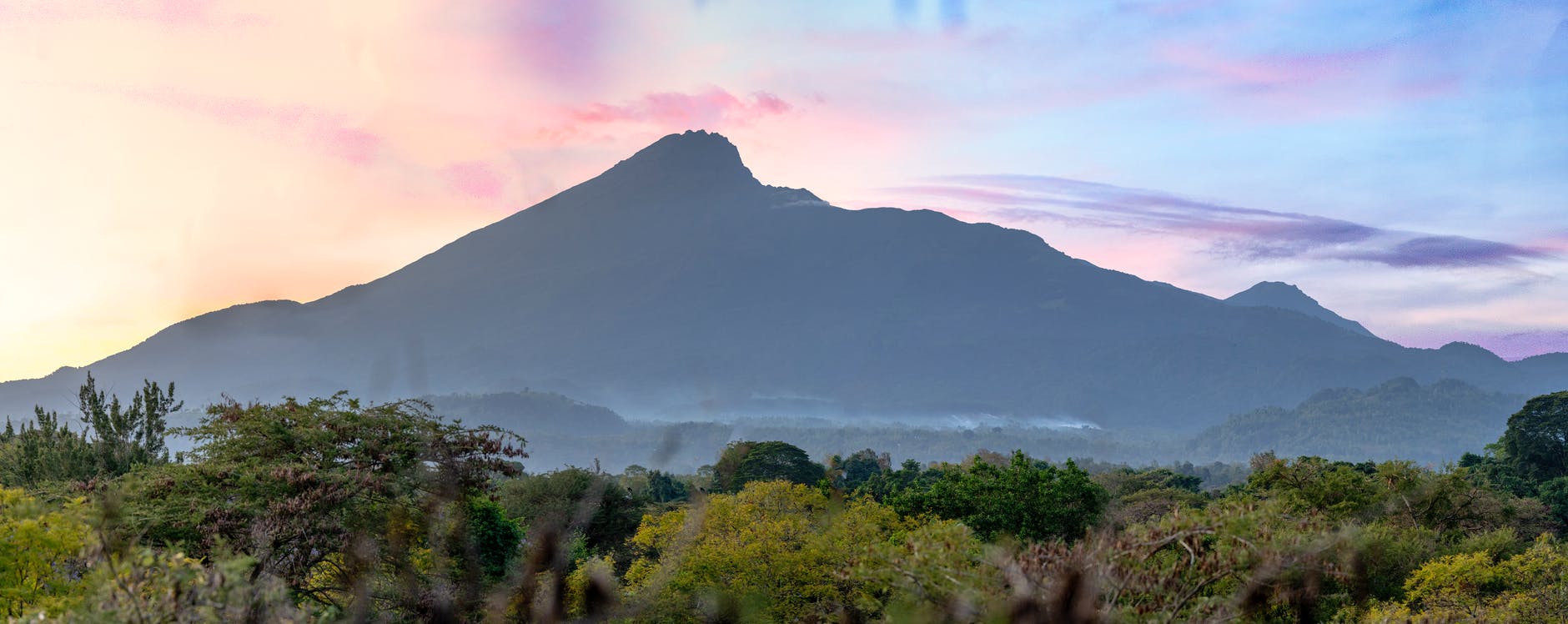
As mentioned, Mount Kilimanjaro is a freestanding mountain and the tallest of its kind not only in Africa but in the world.
Mount Kilimanjaro is estimated to have been formed over 1 million years ago, it was formed as a result of active continental rifting in the Eastern African Rift Valley. In the valley the thinning lithosphere (otherwise known as the rocky outer layer of the earth) created fractures and molten lava began to burst through these fractures. In the beginning the lava was thin allowing a gently sloping base to be formed. Over time the lava became thicker and stronger and first formed Shira cone, followed by Mawenzi and finally Kibo.
Mount Kilimanjaro is widely considered the easiest of the Seven Summits to climb and as a result it has been nicknamed “Everyman’s Everest”. To climb Mount Kilimanjaro you don’t need climbing ropes or specialist mountain gear. You don’t even need previous mountain climbing experience.
Mount Kilimanjaro is easier to access than the majority of the other Seven Summits. Firstly, regular flights from Europe and elsewhere operate frequently into Kilimanjaro Airport. As well as that, there are great hotels and equipment hire stores surrounding Kilimanjaro.
BOOK your stay near Mt Kilimanjaro here!
Climbing Kilimanjaro’s Highest peak (Kibo)
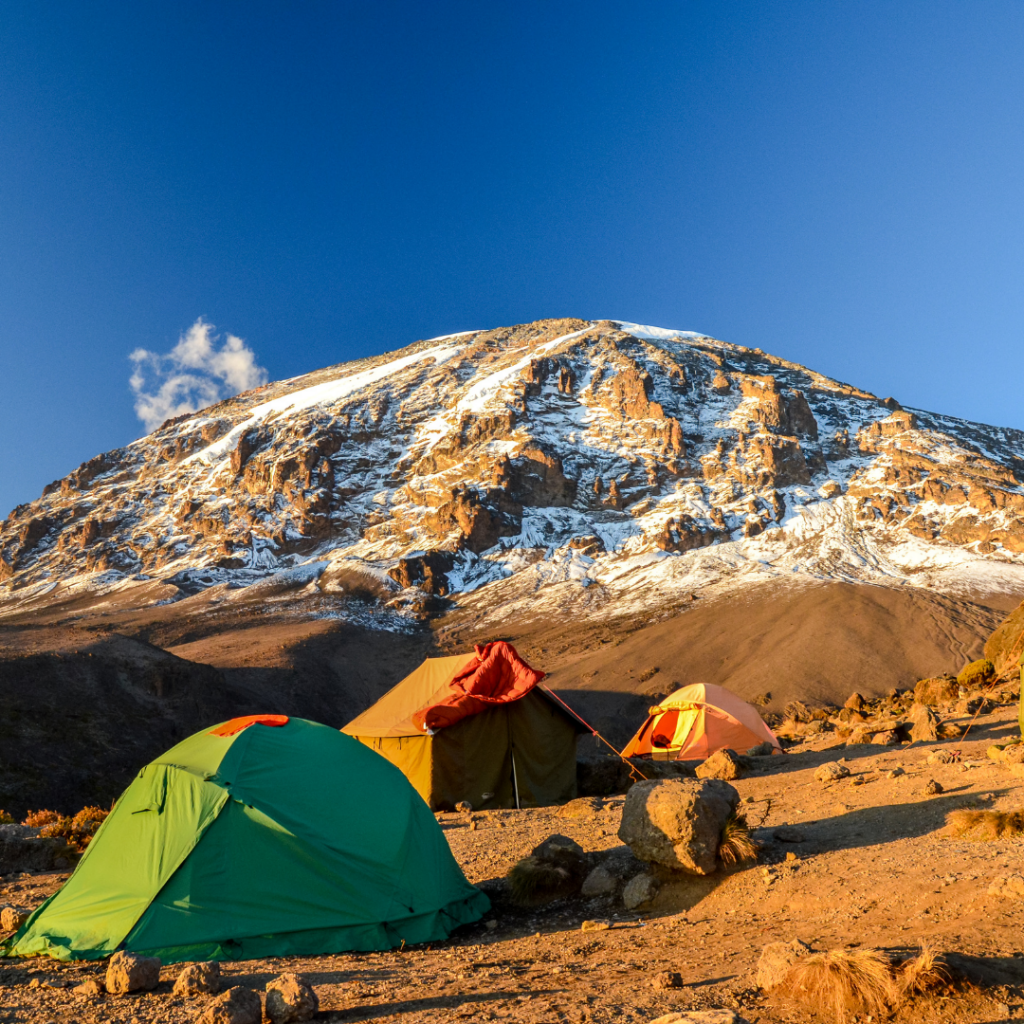
Kibo is the summit of Mount Kilimanjaro with a height of 5893 meters (19,334 feet). It is classed as a dormant volcano, with scientists estimating it last erupted approximately 360,000 years ago. The last volcanic activity on Kibo was recorded just over 200 years ago.
Kilimanjaro has six climbing routes to the summit: Marangu Route; Machame Route; Rongai Route; Lemosho Route; Mweka Route and the new Northern Circuit route.
Marangu route –
The Marangu route is considered the easiest route to the summit and as a result is the most popular. It is so popular that it has been nicknamed the “Coca Cola route” or “tourist route”. Marangu is accessed from the South Eastern side of the mountain.
It is considered easy due to its gradual uphill climb. Its popularity can also be owed to the fact it offers sleeping huts with dorm-style beds instead of camping. There are three camps on this route – Mandara at 2700 meters; Kibo at 4730 meters and the largest Horombo at 4703 meters.
If you’re limited on time you can do a one-day guided hike to Mandara Hut, the tour departs from Arusha.
The short duration of the Marangu route – it can be completed in five or six days, means that acclimatization can be a problem for many hikers of this route. On Mount Kilimanjaro oxygen depletes significantly after 10,000 feet thus, you need to give your body extra time to adapt to the oxygen deprivation it is experiencing. The longer you spend in high altitude areas – the more red blood cells your body can create. As a result, most itineraries allow an extra day on the Marangu route for your body to acclimatize. The extra day extends the duration to six days.
Another negative is that Marangu is not as scenic as the other routes because the ascent and descent are on the same track.
This 5-night 6-day guided climb via the Marangu Route, includes absolutely everything and is a highly-recommended and safe tour!
Machame route –
If reaching the summit is your main objective then, the Machame route offers the highest success rate. It is a seven day trek, meaning it’s great for acclimatization because you walk high and sleep low daily. Another bonus is the scenery on this route is stunning.
Camps on this route include – Machame (2580 meters); Shira (3840 meters); Barranco (3950 meters); Karanga Valley (3995 meters); Barafu (4550 meters) and Millenium (2800 meters).
The Machame route is accessed from the South, a short drive from Moshi will bring you to the Machame gate.
This 6-day climbing tour via the Machame Route is very reasonably priced and includes an experienced guide and all transport but you do need to have your own climbing gear.
Rongai route –
The Rongai route offers a more wild climbing experience as it is a less-traveled route to the summit. It is unique because it offers a different perspective of Mount Kilimanjaro by approaching it from the North. This route is in fact the shortest route to the summit, but a seven day trek is still advised to allow for acclimatization.
Camps on this route include – Rongai Cave (2620 meters); Kikelewa (3600 meters); Mawenzi Tarn (4300 meters); Kibo Hut (4700 meters) and Horombo Hut (3720 meters).
Access to the Rongai route is on the North Eastern side, along the border of Tanzania and Kenya.
This 6-day guided climbing tour via the Rongai Route has an 86% success rate – which is pretty high!
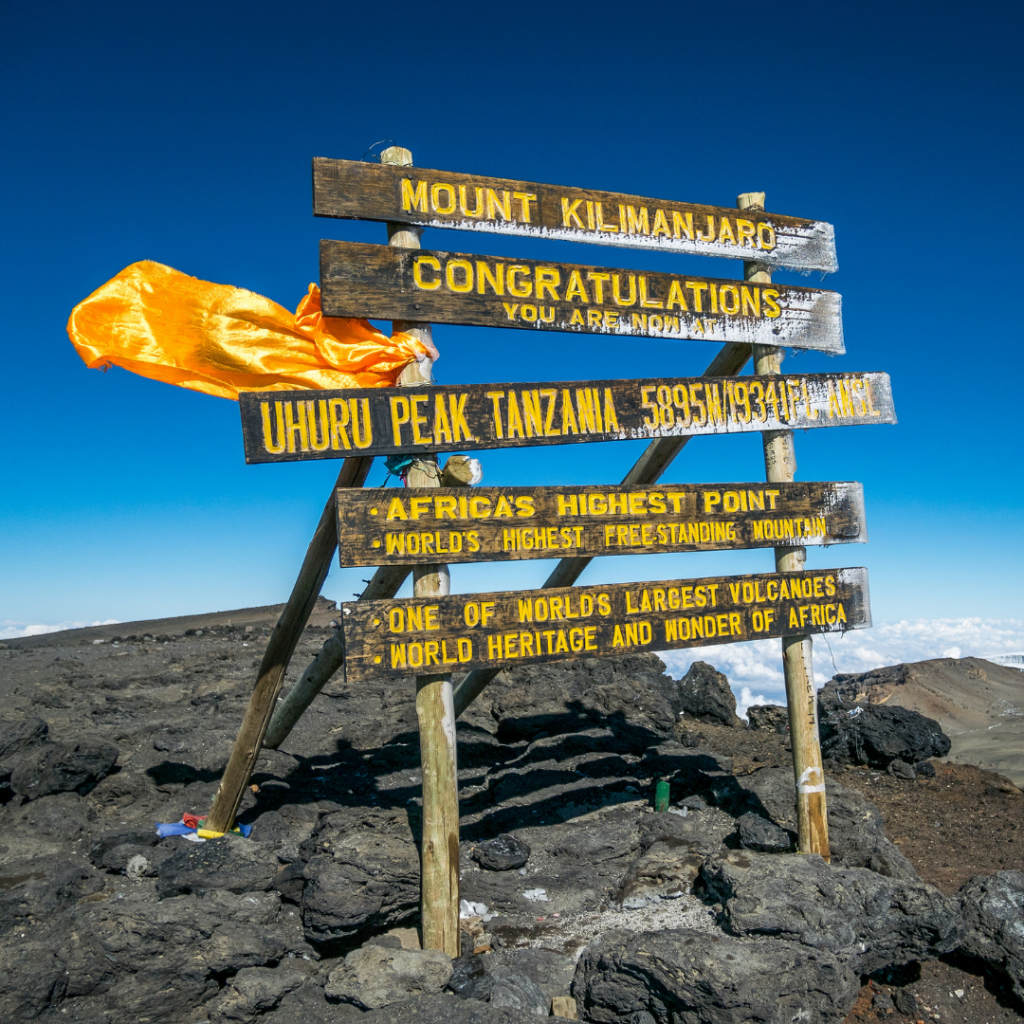
Lemosho route –
It is advisable to allow eight days to complete this route to allow for acclimatization. The Lemosho route is considered the most beautiful with gorgeous views of the western breach of the mountain.
Camps on this route include – Mti Mkubwa (2820 meters); Shira 1 (3500 meters); Moir Hut (4200 meters); Barranco (3900 meters); Karanga (3960 meters); Barafu (4680 meters) and Mweka (3100 meters).
This 8-day Lemosho climb is very popular with beginners and because it’s longer than the others it allows for better acclimatization!
Umbwe route –
This is a descent only route and is used when descending from Lemosho, Machame, Umbwe or Shira ascent routes. These routes are linked to the Umbwe Route by the high-level traverse beneath the Southern Icefields, the Kibo South Circuit.
Northern Circuit –
The longest and the newest route on Mount Kilimanjaro, Northern circuit allows the most acclimatization time. Currently, a very limited number of travelers have set foot on this trail.
The route approaches Mount Kilimanjaro from the west, beginning with a long drive from Moshi to Londorossi Gate. It follows the Lemosho route for the first few days.
Camps on this route include – Mti Mkubwa (2820 meters); Shira 1 (3500 meters); Shira 2 (399 meters); Lava Tower (4640 meters); Moir Hut (4200 meters); Buffalo Camp (4000 meters); Third Cave (3930 meters); School Hut (4800 meters) and Mweka Camp ( 3110 meters).
Book this 8-day guided climb via the Northern Circuit, the newest and longest route on Kilimanjaro.
Climbing Kilimanjaro’s Mawenzi peak
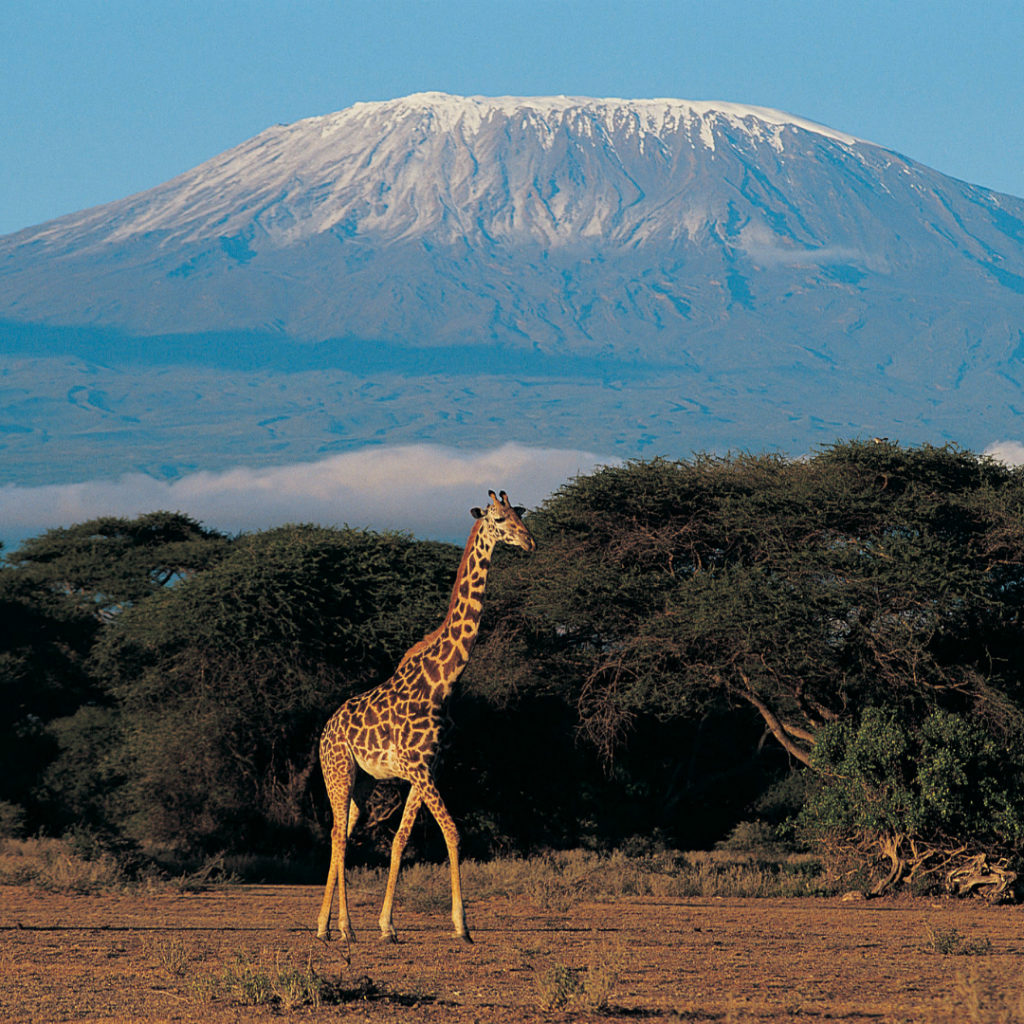
Mawenzi is classed as an extinct volcano. It is the third highest peak in Africa (after Kibo and Mount Kenya), it stands at 5149 meters or 16,890 feet.
The rugged terrain of Mawenzi peak means that most of its seven peaks can only be reached by technical roped ascents.
There are three routes to climb Mawenzi peak, these are listed as follows:
- Rongai route down Marangu gate
- Marangu route via Zebra rock down Marangu gate
- Machame, Lemosho and Londorosi routes via Northern circuit down Mweka gate.
Climbing Kilimanjaro’s Shira peak
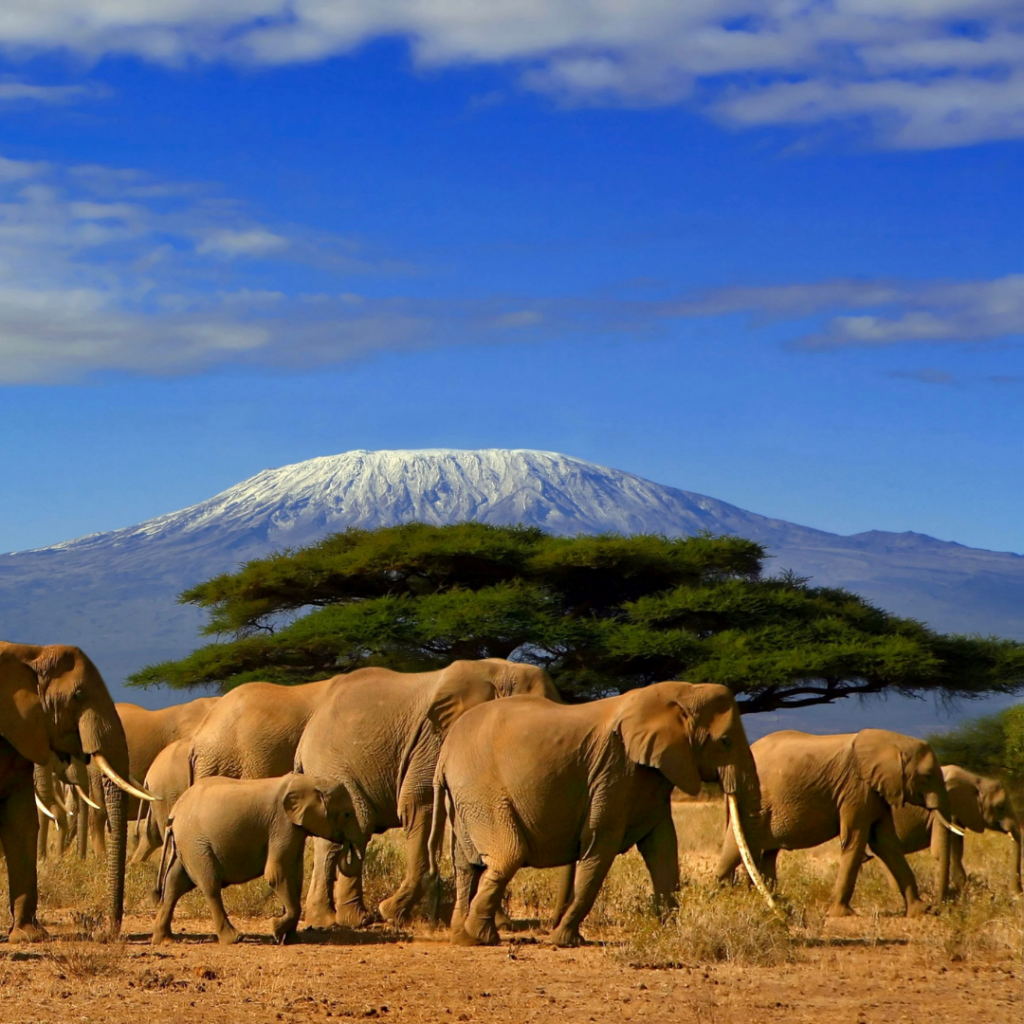
Like Mawenzi, Shira is classed as extinct. It is the smallest of Mount Kilimanjaro’s three cones, measuring 3962 meters or 13,000 feet.
Between Shira and Kibo is the Shira Plateau, this is a 6200 hectare collapsed crater, which was formed by lava eruptions which overtime solidified and turned to the rock you see there today.
Some of the main summits on Shira include Johnsell Point at 3962 meters, Klute¨Peak on Shira Ridge at 3920 meters, the Cone at 3840 meters and Shira Cathedral at 3720 meters.
Climbing Elevation Gain on each route on Kilimanjaro
The below table shows the maximum and minimum ascent you will climb each day; the elevation gain per day as well as the total distance covers. It also highlight the height above sea level that each trk begins.
| Route name | Max./min. ascent distance per day | Elevation gain max./min. per day | Distance covered in total | Height above sea level at which trek begins |
| Marangu route | 8km – 12km | 878 – 1192 meters | 70km | 1870 meters |
| Machame route | 5km – 30km | 701 – 1189 meters | 62km | 1490 meters |
| Rongai route | 6km – 9km | 400 – 1194 meters | 72km | 1950 meters |
| Lemosho route | 4.3km – 18.1km | 450 – 1244 meters | 67km | 2360 meters |
| Umbwe route | 4km – 11km | 1075 – 1299 meters | 53km | 2940 meters |
| Northern Circuit route | 5km – 14km | 340 – 1000 meters | 79km | 2360 meters |
Start Level of all routes on Mt Kilimanjaro
The height at which all routes begin are as follows:
- Marangu Route begins at Marangu Gate which is 1,870 meters above sea level
- Machame Route starts at Machame Gate (1490 meters)
- Rongai Route begins 70km from Marangu Gate at the Rongai Start Point (1,950 meters)
- Lemosho Route starts at Londorossi Gate at an altitude of 2360 metres
- Mweka Route begins at Umbwe Camp at 2940 meters
- Northern Circuit route follows the Lemosho route for the first few days, so, it begins at Londorossi Gate (2360 meters)
What other mountains can you climb in Africa?

Five of Africa’s highest mountains include Mount Kenya; Mount Stanley; Mount Meru; Ras Deshen and Mount Toubkal. They too are popular with climbers, but not to the same extent as Africa’s tallest mountain.
1. Mount Kenya, Kenya
Elevation: 5199 meters/ 17057 ft
There are three main summits on Mount Kenya – Batian, Nelion and Point Lenana. Batian is suitable only for advanced rock climbing and mountaineering, it is rated IV+. Nelion is also considered a challenging climb and is rated IV-. Point Lenana at 4985 meters tall is popular with hikers as no technical climbing skills are required.
You can climb Mt Kenya on this 4-day guided tour via the Sirimon Route.
2. Mount Stanley, Rwenzori Mountains, Uganda
Elevation: 5109 meters/ 16,763 feet
A popular hiking option up Mount Stanley takes you to Margherita Peak, this is considered a difficult climb due to the rainforest and muddy areas you must trek through. It is advised to allow 5 days to ascend to the summit.
3. Mount Meru, Tanzania
Elevation: 4562meters/ 15,262 feet
Mount Meru is an active volcano and is just 70 km west of Mount Kilimanjaro. The ascent is quite steep to the summit and many climbers consider it more challenging than Kilimanjaro.
This 4-day guided climb up Mount Meru comes highly recommended.
4. Ras Dashen (Dejen), Simien Mountains, Ethiopia
Elevation: 4546meters/14,930 feet
Ras Dashen is Ethiopia’s highest mountain, it is a five day ascent to the summit climbing to smaller peaks and across the Bwahit Pass to Ambiko, It is from Ambiko you will start your ascent to the summit. There are numerous different routes to the summit of Ras Dashen and it may take you anywhere from three days to two weeks to complete.
5. Mount Toubkal, Morocco
Elevation: 4167meters
Located in the High Atlas Mountains in North Africa – a mountainous region close to Marrakech. It is often praised as a great introduction to high altitude mountaineering. The climb to the summit of Mt Toubkal is challenging, but requires no prior mountaineering experience.
Is Kilimanjaro the Tallest mountain in the World?
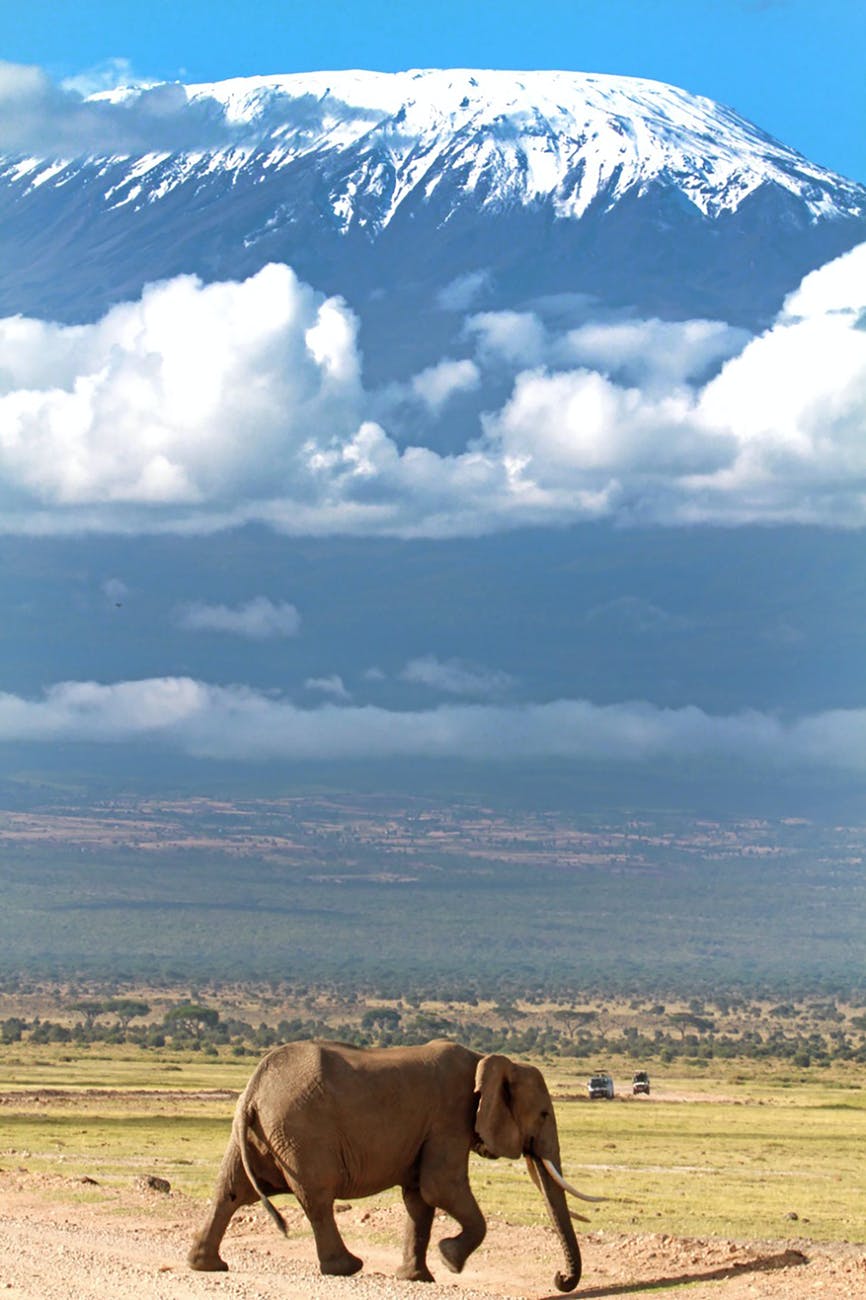
Kilimanjaro is the highest peak on the continent of Africa and is the highest freestanding mountain in the world.
The title of world’s highest mountain goes to Mount Everest at 8848 meters (24,032 feet). The second tallest mountain in the world is K2 located on the border of Pakistan and China at 8611 meters Whilst the third highest is Kangchenjungo on the Nepal/India border at 8586 meters. All three highest mountains in the world are part of a group of mountains called the eight-thousanders.
Thanks for reading my blog, Aimee
P.S I’ve loads of other Africa blog posts including Gorilla trekking in Bwindi Impenetrable Forest Uganda, our experience doing a safari in Serengeti, Amboseli National Park, dining at The Rock Restaurant on Zanzibar and much more!
